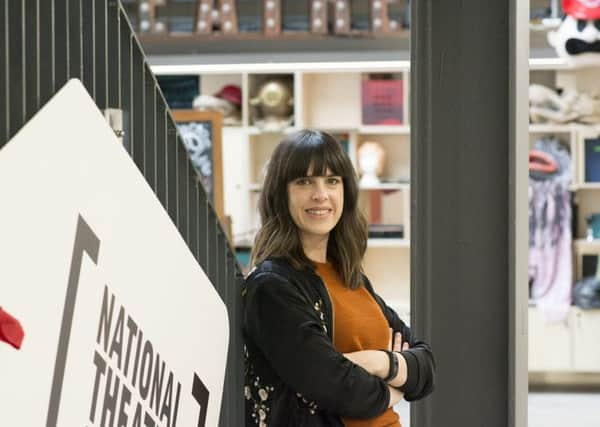Joyce McMillan: new National Theatre of Scotland programme is impressive, but why aren’t there more large-scale shows?


So it’s perhaps not surprising that Scotland’s teenage National Theatre – which launched its first production in 2006 – also takes some flak; although most of it is more muted than those major recent protests. This week, the NTS launched its 2020 programme, with the usual modest celebration at the company’s canal-side headquarters in Glasgow; and when acting artistic director Caroline Newall took to the stage – in artistic director Jackie Wylie’s absence on maternity leave – she was, as ever, announcing a busy and strikingly varied programme, featuring seven mid-scale productions of which five are completely new.
The centrepiece is a brand new Edinburgh International Festival production of Liz Lochhead’s stunning 2000 version of Medea, directed by former RSC boss Sir Michael Boyd, and starring the brilliant Glasgow-based writer and actress Adura Onashile. There’s also a new Scottish-set reimagining of Ibsen’s An Enemy Of The People written by Kieran Hurley of Beats fame, a Tron co-production of Hamlet masterminded by brilliant experimentalists Stewart Laing and Alan McKendrick, and two new shows, by May Sumbwanyambe and Adura Onashile, exploring the history of slavery and its links to Scotland. Joe Douglas’s smash-hit production of 7:84 classic The Cheviot, The Stag, And The Black Black Oil will return at the Pavilion in Glasgow and on tour; and on a smaller scale, the NTS will present two more brand-new shows, Isobel McArthur’s Ferry Tales – to be performed on various Cal-Mac ferry routes next spring – and, for the Edinburgh Fringe, Rob Drummond’s Who Killed Katie?, a solo attempt by one of Scotland leading playwrights to explore the current craze for true crime podcasts. And on top of all that, there are participatory, development, community and youth projects galore.
Advertisement
Hide AdIt’s an impressive and sometimes visionary programme, in other words; but even the NTS itself would concede that it lacks a top layer of large, accessible big-stage shows, with big casts in double figures, that would not only employ larger numbers of Scottish-based actors, designers, and directors, but also – and perhaps crucially – make the NTS’s work more visible to a large popular audience around Scotland. In 2018, the NTS played to just under 90,000 people, at all levels, while Edinburgh’s Lyceum Theatre attracted 95,000 paying customers, in the year to summer 2019. And with the NTS’s direct grant from the Scottish Government at £4.2 million a year, which dwarfs the grants of £1m to £1.5m given to Scotland’s largest building-based theatre companies, the Lyceum, the Citizens’ and Dundee Rep, questions are sometimes asked about whether the scale of NTS’s activities matches its resources.
“We really are aware of the need to produce theatre at every scale,” says Newall. “At the moment, we have 15 large-scale projects in the pipeline that we hope will start to emerge in 2021. It’s tough; the development time for big projects can be very long, and with our theatre-without-walls model, we’re always competing for space in Stage 1 theatres across Scotland with big commercial musicals that carry a lower risk than most of our work. But it’s also very exciting.”
Newall is too diplomatic to talk about the hiatus in the NTS’s long-term artistic planning that followed the production of the vast James Plays trilogy, Laurie Sansom’s sudden departure as artistic director in spring 2016, and the subsequent year-long gap before Wylie took up the post. For Newall, though, it’s clear that there are also some profound creative reasons for the NTS’s current focus on work that may not, at least in its early years, attract large audiences, and that is the company’s serious mission, under Wylie’s directorship, to challenge and renew the very definition of theatre, in ways that will help to guarantee its long-term future.
“We do invest a lot of our resources in working with artists and audiences from traditionally excluded groups,” says Newall, “artists of colour, LGBT artists, artists with disability, artists and audiences that are traditionally excluded by poverty – groups that are often not going to generate huge audiences immediately, but that may be vital to the long-term future of the art-form. The same goes for our strand of more experimental work, like Stewart Laing and Pamela Carter’s great show Them! at the Tramway this year. And we’re hugely committed to our work with young people, and to playing our part in Theatre In Schools Scotland – because that involves working with almost every local authority in the country, to make sure that world-class theatre, and the awareness it brings of possibilities for their own self-expression, is available to every primary school child in the country.
“So we are about producing great theatre at every scale, and we are working very hard on that at the moment. But we’re also about trying to give this art-form an exciting future, often by bringing in artists who just haven’t been around before. Sometimes, that makes people who are used to being included uncomfortable, particularly when resources are scarce. But we believe this is a vital part of our role, as Scotland’s national theatre – to be thinking hard about the future of the art-form, to use our resources to make space for that, and to challenge artists to do the same.”
Details of the National Theatre of Scotland’s 2020 programme can be found at www.nationaltheatrescotland.com